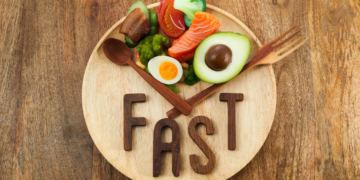Fast fashion has become a dominant force in the retail world, offering consumers the latest trends at low prices and on a fast turnaround. However, this high-speed fashion cycle comes at a high environmental and ethical cost, contributing to pollution, waste, resource depletion, and labor exploitation. Conscious consumerism offers a more sustainable alternative by encouraging mindful shopping choices that support long-lasting quality, fair labor, and eco-friendly practices.
This article dives into the environmental impact of fast fashion and provides actionable steps to adopt a more conscious approach to fashion. By understanding the effects of our clothing choices, we can make decisions that benefit both people and the planet.
What is Fast Fashion?
Fast fashion refers to the rapid production and sale of inexpensive clothing that mimics current fashion trends. Major retailers produce new styles on a near-weekly basis, offering consumers a steady flow of cheap clothing items that quickly go out of style. This trend-focused approach encourages frequent purchases, as shoppers are drawn to low prices and constantly refreshed collections.
Why Fast Fashion is Problematic
- Environmental Impact: Fast fashion heavily relies on resources like water, energy, and synthetic fibers. Additionally, the production and disposal of fast fashion garments contribute to massive textile waste, microplastic pollution, and greenhouse gas emissions.
- Labor Exploitation: To keep prices low, many fast fashion brands outsource production to countries with lower labor costs, often paying workers below living wages in poor working conditions.
- Short-Lived Products: Fast fashion garments are often made with cheap materials and low-quality construction, leading to quick wear and tear. As a result, they’re typically discarded after only a few wears, contributing to the cycle of waste.
The Environmental Impact of Fast Fashion
1. Excessive Water Usage and Pollution
The fashion industry is one of the most water-intensive industries globally, consuming around 79 billion cubic meters of water each year. Producing a single cotton T-shirt can require up to 2,700 liters of water—equivalent to the amount one person drinks over two years. Dyeing and treating fabrics also leads to water pollution, as toxic chemicals often end up in rivers and lakes, harming aquatic ecosystems and contaminating water supplies for local communities.
2. Textile Waste and Landfills
Fast fashion’s emphasis on low-cost, disposable clothing results in significant textile waste. In the U.S. alone, approximately 85% of discarded clothing ends up in landfills each year, amounting to around 11 million tons of textile waste. Synthetic fibers like polyester, commonly used in fast fashion, can take hundreds of years to decompose and release harmful microplastics into the environment as they break down. Microplastics pollute waterways, soil, and even the food we consume, creating long-term environmental damage.
3. Carbon Emissions and Energy Use
The production of synthetic fabrics, like polyester and nylon, is highly energy-intensive and relies on fossil fuels. Fast fashion brands also have extensive supply chains, with raw materials, fabrics, and finished garments often transported across multiple countries. This contributes to the fashion industry’s sizable carbon footprint, which accounts for approximately 10% of global greenhouse gas emissions—more than aviation and shipping combined.
4. Deforestation and Biodiversity Loss
To meet the demand for certain textiles, large areas of land are cleared to grow monoculture crops like cotton or to raise livestock for wool and leather. This deforestation reduces natural habitats, endangering biodiversity. Additionally, the use of pesticides and fertilizers on these monocultures can harm local wildlife and disrupt ecosystems.
How to Practice Conscious Consumerism
1. Choose Quality Over Quantity
One of the most impactful ways to reduce your environmental footprint is by prioritizing quality over quantity. Investing in well-made, durable clothing reduces the need for frequent replacements and ensures that each item can withstand regular wear. A capsule wardrobe with versatile pieces can provide a stylish, functional collection without the need for constant additions.
2. Support Sustainable and Ethical Brands
Look for brands that are transparent about their environmental and ethical commitments. Many sustainable fashion brands use eco-friendly materials, ethical labor practices, and environmentally conscious production methods. Certifications like Fair Trade, Global Organic Textile Standard (GOTS), and OEKO-TEX provide assurance that the brand is committed to responsible practices.
3. Buy Secondhand and Vintage Clothing
Shopping secondhand is a fantastic way to reduce waste and find unique, high-quality pieces. Thrift stores, online resale platforms, and vintage shops offer a wide variety of styles at affordable prices. By giving pre-loved clothing a new home, you’re helping to extend the lifecycle of each garment and reducing the demand for new products.
4. Opt for Eco-Friendly Fabrics
Choosing natural and eco-friendly fabrics is another way to lessen your impact. Fabrics like organic cotton, hemp, and linen require fewer resources to produce and are biodegradable. Recycled fabrics, such as recycled polyester, are also great options as they repurpose existing materials and reduce the need for virgin resources.
Eco-Friendly Alternatives to Fast Fashion Fabrics
1. Organic Cotton
Organic cotton is grown without synthetic pesticides or fertilizers, reducing chemical pollution and water usage. It’s a more sustainable option compared to conventional cotton, which is one of the most water-intensive and chemically treated crops. Organic cotton also supports healthier soil and promotes biodiversity by avoiding harmful chemicals.
2. Hemp and Linen
Hemp and linen are durable, eco-friendly materials that require minimal water and no pesticides to grow. Hemp, in particular, is known for its fast growth and ability to improve soil quality. These fabrics are naturally breathable, biodegradable, and become softer with wear, making them ideal for sustainable clothing.
3. Recycled and Upcycled Fabrics
Recycled polyester, made from plastic bottles, and upcycled materials help reduce waste and the need for virgin resources. Brands that use recycled materials can repurpose plastic waste into new garments, supporting a circular economy. Upcycling, on the other hand, involves transforming existing textiles into new, unique pieces, which reduces the environmental footprint of new clothing production.
Benefits of Building a Sustainable Wardrobe
1. Reduced Environmental Footprint
By opting for sustainable materials, secondhand items, and high-quality pieces, you can drastically reduce your water, energy, and waste footprint. Sustainable choices in fashion reduce pressure on natural resources, conserve biodiversity, and limit pollution, contributing to a cleaner, healthier environment.
2. Support for Ethical Labor Practices
Conscious consumerism encourages fair labor practices, supporting brands that prioritize safe working conditions and fair wages. By choosing ethically sourced fashion, you’re helping to combat labor exploitation and promote worker welfare globally.
3. Lasting Personal Style
Investing in timeless, versatile pieces allows you to cultivate a wardrobe that reflects your personal style rather than following fleeting trends. These items last longer, offering better value and reducing the need for frequent purchases. A well-curated wardrobe brings satisfaction, versatility, and confidence, without the need for constant shopping.
4. Mental and Financial Benefits
Minimalist wardrobes focused on quality over quantity help reduce decision fatigue and simplify daily routines. Additionally, investing in durable pieces can be more economical in the long run, as you avoid repeatedly replacing worn-out items. This mindful approach to fashion offers a sense of fulfillment and purpose, fostering a healthier relationship with clothing.
Conclusion
Fast fashion’s impact on the environment and labor practices cannot be ignored. Embracing conscious consumerism helps counter these issues by making mindful choices that support sustainability, ethics, and personal style. From shopping secondhand to choosing eco-friendly fabrics, every small change in our fashion choices contributes to a positive shift in the industry.
Building a sustainable wardrobe might seem challenging, but with gradual changes, it’s achievable. Each decision to buy quality, avoid waste, and prioritize ethical brands adds up to a meaningful impact. By choosing conscious consumerism, you’re not only enhancing your wardrobe but also supporting a greener, fairer world for future generations.
Ready to shift to a more sustainable wardrobe? Start with one small change today, such as choosing a secondhand item or researching an eco-friendly brand. Share your favorite sustainable fashion brands in the comments, and subscribe to our newsletter for more eco-friendly lifestyle tips and inspiration.























